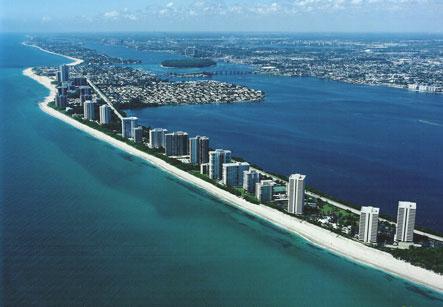Seven terrific places to retire

Here are seven underrated retirement havens (complete with comparisons to their more expensive alternatives) that are relatively affordable, delightful and full of opportunities for work and play.
Santa Fe, New Mexico
Joel Stein, a corporate bond broker from New York City, and his wife retired to Santa Fe in 1997. The reason: "It's like a microcosm of New York but without the hustle and bustle," he says. "It's a small town but it's sophisticated — there's art, opera and hundreds of restaurants. It's a nice place to retire but it doesn't feel like a 'retirement town'."
Nicknamed "City Different," Santa Fe is indeed unlike the trendier Sedona, an Arizona town that's often touted as a best place to retire. Unemployment is just 5.3%, thanks to Santa Fe's thriving tourism business and government payroll. (Santa Fe is the state capital.)
The arts scene is one of the best you'll find anywhere. Santa Fe is dotted with 240 art galleries and the home of Art Santa Fe, an international art fair that attracts buyers and tourists from around the globe. In fact, Santa Fe's art market is the fourth largest in the country in terms of sales, according to the University of New Mexico Bureau of Business and Economic Research. Stein says he and his wife have embraced the scene. He leads historic walking tours of the area and works for pay at the Museum of Natural History; she is a docent at a local art museum.

Lincoln, Nebraska
Lincoln is the quintessential Midwestern town — friendly people, college football and picturesque landscapes. Residents take a brimming pride of their city's low crime rate and accessible natural beauty, including ten nearby lakes and more than 99 miles of recreational trails.
Lincoln sounds a lot like another Midwest retirement haven that frequents the best lists: Ann Arbor, Michigan. But Nebraska's state capital has a much lower unemployment rate, just 3.6% compared to Ann Arbor's 7.2%.
Even more surprising, especially for a Midwest town, says experts, is that in the past two decades the jobless rate in this state capital has never gone above 5%, according to the Bureau of Labor Statistics. The University of Nebraska, government jobs, as well a sizable corporate presence, including Kawasaki and Assurity Life Insurance, help keep employment stable. And Lincoln is affordable: Housing prices have remained relatively flat since 2007, with a two-bedroom home now running for about $115,000.
No wonder Jim Strand, a 65-year-old Lincoln resident, decided to stay put when he quit working. "Stability is really important with all the craziness in the financial and housing markets," he says. Strand, who served as the interim business manager for the local zoo for the first eight months of this year, appreciates the job and volunteer opportunities: "It's nice to feel like you're part of the community."

Manhattan, Kansas
The Little Apple, as Manhattan, Kan., is known, is perfect for active, outdoorsy retirees who also want the cultural and educational opportunities that a college town brings. The 1,200-acre Tuttle Creek Park boasts a 12,500-acre reservoir and 100 miles of shoreline with walking paths. The Flint Hills nature preserve (yes, there are hills in Kansas) is the last large tract of protected prairie land in North America. After a day enjoying nature, residents can reward themselves with dinner out at one of the town's 130 restaurants.
Retirees can take or audit dozens of classes — from martial arts to Spanish — at the UFM Community Learning Center or at Kansas State University. Manhattan actually conjures up images of retirement hotspot, Athens, Georgia — another college town with an abundance of good restaurants and outdoorsy activities.
Here's the difference: Manhattan, Kansas, is a cheaper place to live. The cost of living is almost 9% lower than the national average and the lowest on our list of cities. (Athens has a cost of living that is just 3.9% lower than average.) Unemployment is also low, coming in at 5.9%.
For boomers dreaming of an entrepreneurial second act, Manhattan is a great place to start a store or other small business. The 23,000 students attending Kansas State University and the personnel at Fort Riley army base help keep the local economy humming. Better yet, experts say commercial real estate is a bargain -- retail space rents in the $20-25 per square foot range — and retail sales in the area have increased about 66% in the past decade, according to John Pagen, vice president for the Chamber of Commerce

Portland, Maine
Northampton, Mass., lands at the top many "best places to retire" lists. And for good reason: It's a scenic, mountain town with lots of Berkshire culture. It's also home to Smith College and close to four other name schools. But the charm comes at a price — it costs nearly 20% more than average city to live there.
Head about 200 miles north and you'll hit Portland, Maine, where the culture and natural beauty rivals Northampton thanks to miles of coastline, the popular fishing area of Sebago Lake, which is only a short drive from the city, and a smattering of islands around the coast. "Portland is known for its natural beauty," says travel blogger Lee Abbamonte.
Foodies also take note: Bon Appetit recently rated the city as one of the top small towns in America, due in part to some notable chefs. Hugo's, for example, is run by French Laundry chef Rob Evans and the chef at Fore Street is a James Beard Foundation Award winner, one of the most prestigious culinary awards.

Santa Maria, California
California's Sonoma and Napa counties have long been the gold standard of California wine country and a mecca for retirees. But prices have risen with that popularity. The median home price in Sonoma County's Santa Rosa, for instance, is close to $300,000 and the cost of living is 45% above average. High prices like these are encouraging Chardonnay-sipping retirees to look at some of the less-popular and more affordable corners of wine country.
Santa Maria is one such gem, says Warren Bland, the author of "Retire in Style: 60 Outstanding Places Across the USA and Canada." Part of the Santa Barbara wine region, which produces highly rated Chardonnays and Pinot Noirs, Santa Maria residents enjoy temperatures in the 60s and 70s nearly year around and with little rain. And while the local job market isn't exactly buzzing, nearby San Luis Obispo (just 30 miles away) and Santa Barbara (75 miles away) have healthier job markets than most California cities and are within driving distance.
Three years ago, when 82-year-old Jack Pellerin from Santa Ynez married a woman from Santa Maria, the couple realized they had too much stuff to fit into one house. So they decided they'd keep both places, splitting their time between them. Soon afterwards, Santa Maria's charms won the couple over to the point where they are almost full-time residents. "It's just the right size — it's big enough that you can get involved in a lot of things, but you still know a lot of people," says Pellerin. The best part, they say: Santa Maria isn't overrun with tourists.

Jupiter, Florida
The Great Recession took a heavy toll on Florida. Unemployment is 11% and median home sales prices have plummeted more than 40% since early 2007. Unfortunately that didn't create loads of housing bargains in some of Florida's most popular retirement spots, many of which were overvalued when the recession began. In Naples, for instance, the median home price is still half a million bucks, according to Zillow.com, even though prices dropped roughly 35% from their highs in early 2007.
While some of Florida's posh areas may still be unaffordable for many retirees, lower home prices in other parts of the state have created some attractive alternatives. Jupiter, for instance, on Florida's Atlantic-facing "Gold Coast" has similar pristine beaches, year-round warm weather, golf courses and shopping as Naples, but is about half the price to live in, according to data from Sperling's Best Places. The award-winning, 600-seat Maltz Jupiter Theatre, a regional theater that hosts well-known shows like Cabaret and Hello Dolly! as well as smaller shows, is a bonus, and swanky Palm Beach is only a 30 minute drive for those who want to stroll through the lap of luxury without having to pay for it.
As for job opportunities, Jupiter, with an unemployment rate of 8%, fares better than most of Florida. The area benefits from hosting the spring training seasons for two professional baseball teams, the Florida Marlins and St. Louis Cardinals, as well as biotech companies like the Scripps Institute and the Max Planck Society.

Ithaca, New York
When the Dalai Lama decided to put down roots in United States, he didn't opt for Buddhist-heavy San Francisco or Eugene, Ore., with their many meditation-loving residents. Instead, he came to Ithaca, N.Y., to "offer Western students the opportunity to study authentic Tibetan Buddhism in a monastic setting."
That doesn't surprise many of Ithaca's 30,000 residents. "It's one of the loveliest places in America," says 76-year-old Roger Battistella, a retired Cornell college professor. This town is known for its beauty: You'll find dozens of waterfalls and craggy gorges that gave rise to tacky bumper stickers and t-shirts that sport the now ubiquitous "Ithaca is Gorges" tagline. But that doesn't spoil the area's 25,000 acres of national forest or the 40-mile long Cayuga Lake.
Perhaps it's all this beauty that give Ithaca its liberal, beatnik bent. "There's a zany political culture here," says Battistella. The "world's largest human peace sign" was created in Ithaca, when a local teen activist gathered nearly 6,000 people in 2008. Residents are well-versed in the art of protesting, as evidenced by recent Occupy Wall Street events and a rally in front of a local Bank of America branch.

Ithaca brings to mind another popular retirement town, Eugene, Oregon. True, the towns are nearly 3,000 miles apart and on opposite coasts, but both are havens for activist, outdoorsy retirees.
No comments:
Post a Comment